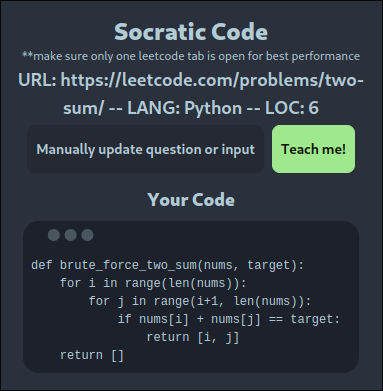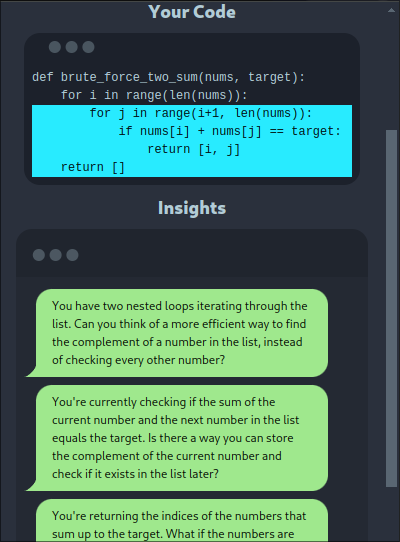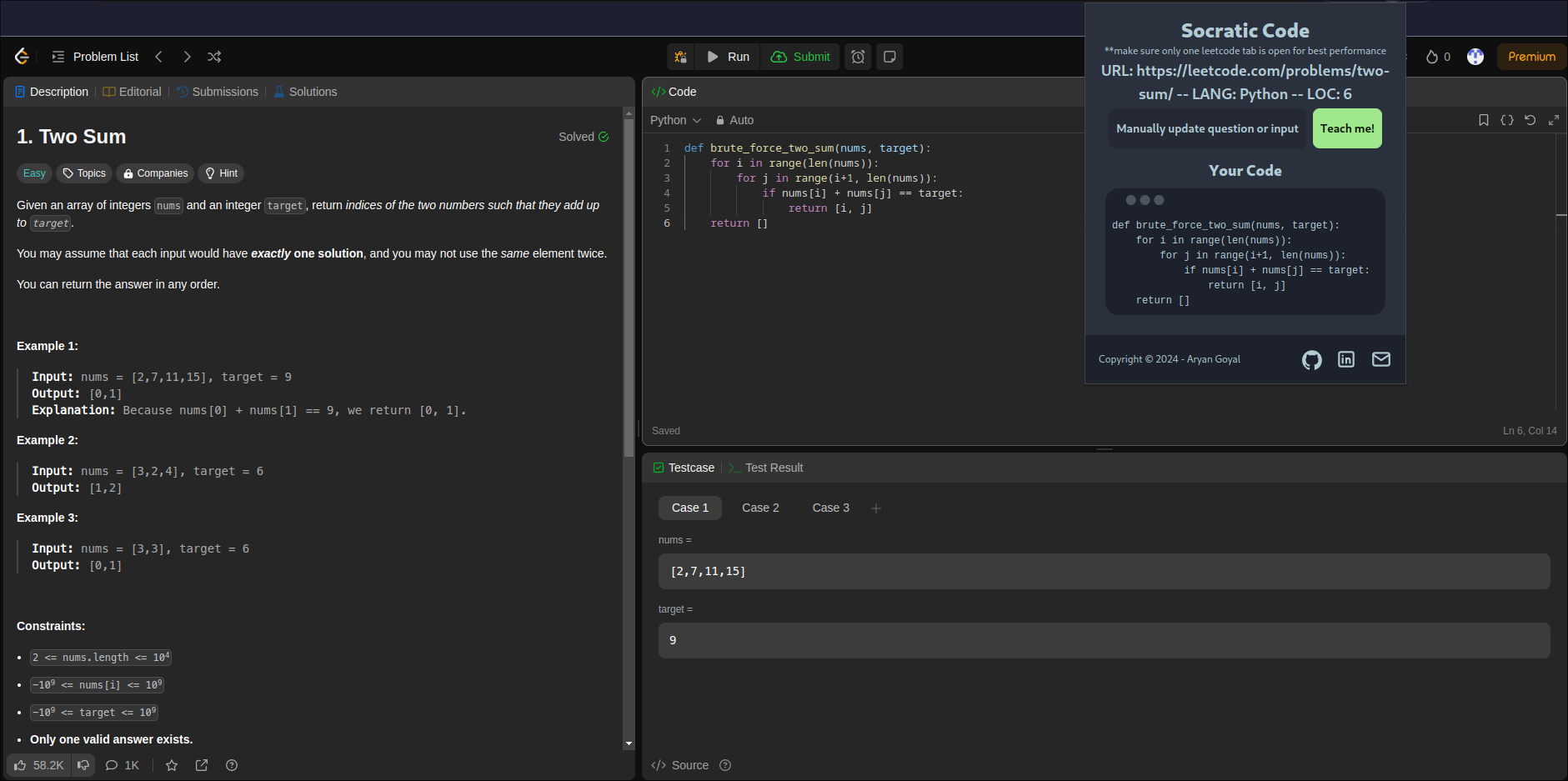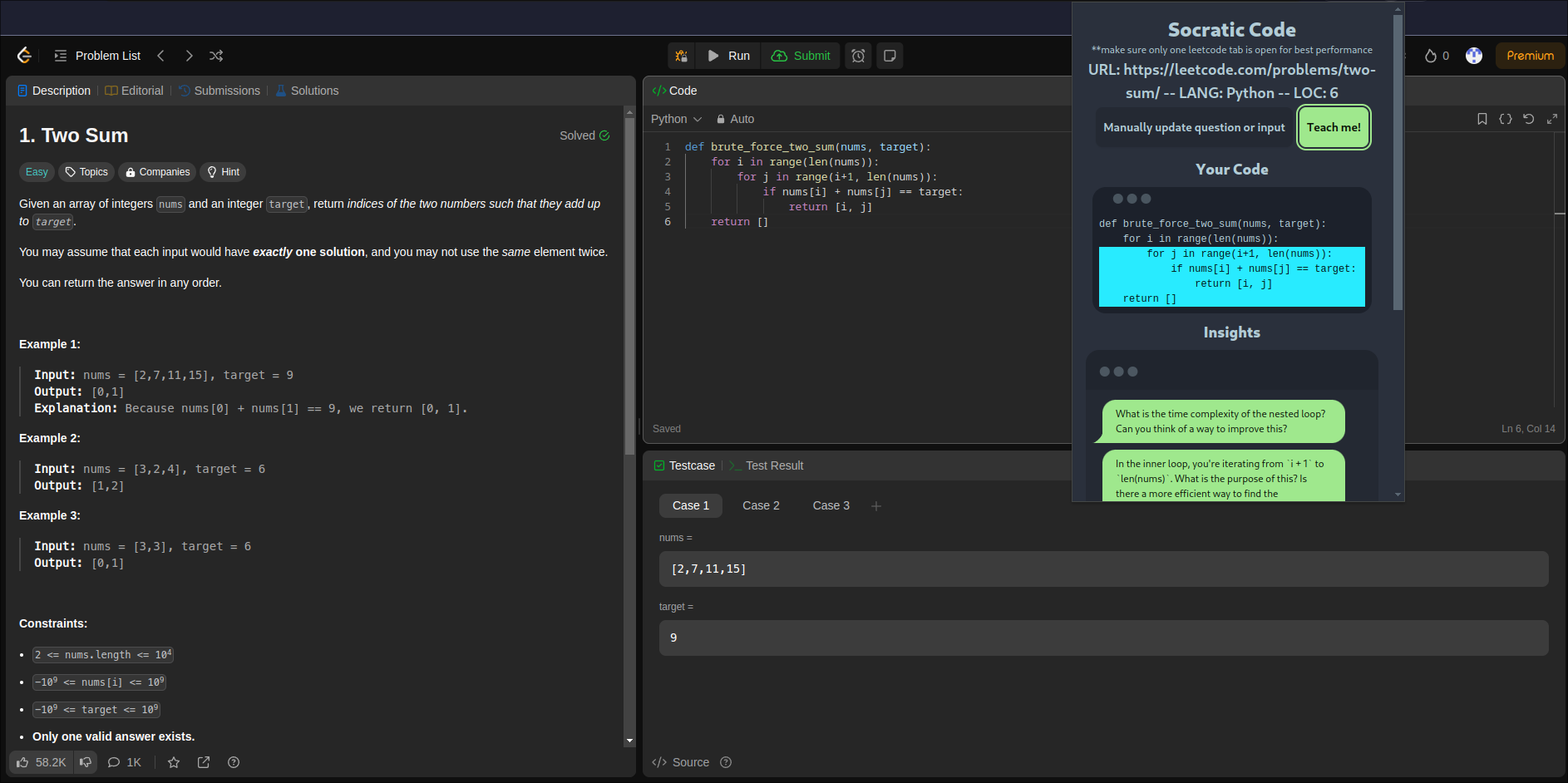This chrome extension helps you to solve leetcode questions on your own by providing insightful questions according to the socratic teaching philosophy
project made for devfolio’s “GenAI Exchange Hackathon by Google 2024”
Helps you solve leetcode on your own
Installation#
Download the package
socratic-code.zipfrom Github ReleasesExtract it
# USE unzip unzip socratic-code.zip # OR USING 7z 7z x socratic-code.zipOpen chrome, go to
chrome://extensions/and enable developer modeClick on Load unpacked and navigate to the
buildfolder you just extracted
Description#
This project aims to create a reliable teaching assistant for Data Structures and Algorithms questions. The project is further narrowed down to create an assistant for Leetcode, which is the most popular website for interview and DSA prep. It is deployed as a Chrome Browser Extension.
This teaching assistant will never tell the user the answer completely, as it is based on the Socratic teaching method, in which the teacher asks insightful questions to guide the pupil towards the answer instead of telling them the answer.
In Scope#
- Creating a teaching assistant that guides the user towards figuring out a leetcode problem by themselves
- Accurate and reliable information
Out of Scope#
- Solving the question or running the code that the user inputs is out of scope for this project
Future Opportunities#
- Creating a problem database for easy identifification of the problem. This can be a simple KV with
problem name->problem description - Creating a solution vector database for these problems, which can be used to give more context to the LLM and perform RAG(Retreival Augmented Generation)
Challenges#
Site Data Pipeline#
It was quite hard to get the input data of the leetcode website. This is because chrome runs the content scripts of the extension in a secluded environment which doesnot have the the properties of the window element in the webpage.
The code editor input that leetcode uses is called monaco, and we can easily get the input data in correct formatting by entering window.monaco.editor.getModels()[0].getValue() in the leetcode website. But this was not the case for the extension, as it doesnot have the properties of window element.
Although we can get the properties of this window element by using the "MAIN" WORLD in the content script, it is then not possible to send this data to the outside environment due to security reasons.
This was solved by identifying the correct elements and selecting them with document.querySelector()
CI#
Due to my inexperience with Continuous Integration, it took me some time to set it up.
This includes:
- The chrome extension CI, which is a github workflow to build the extension using
pnpmand releasing it with github Releases - The backend CI, which is a github workflow for publishing the backend service as a docker image on the
ghcrregistry, or Github’s docker registry
Working#
The following images represesnt the working of the extension




Architecture#
